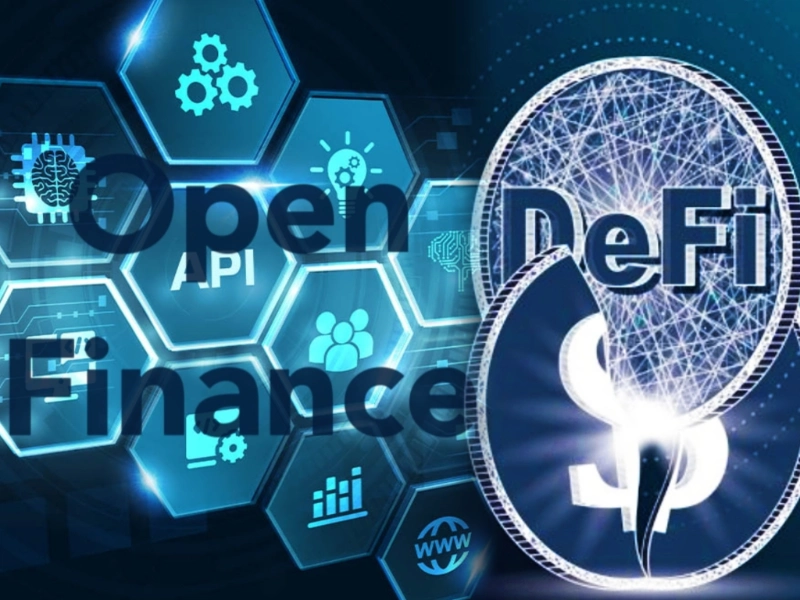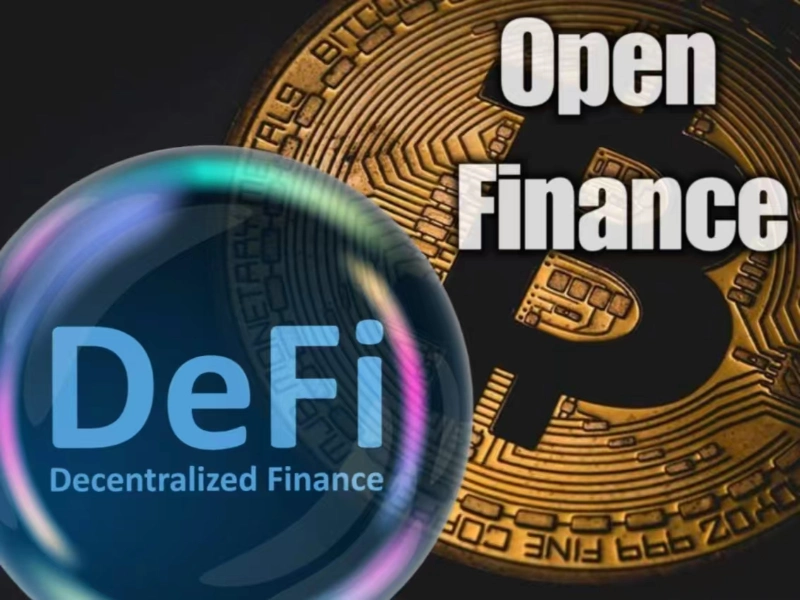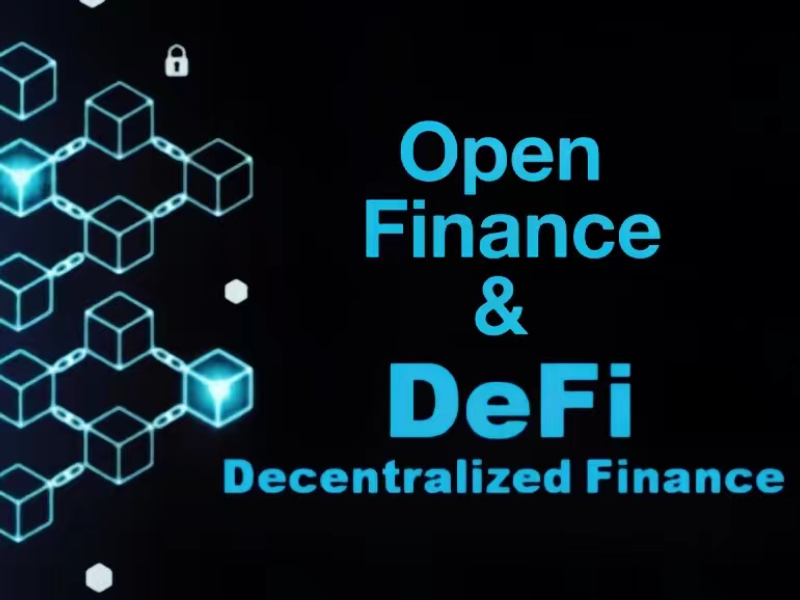- Open Finance and DeFi share the conceptual goal of creating an open, transparent and interoperable financial system. Technologies such as blockchain technology and smart contracts provide them with the basis for achieving transparency, automation and decentralisation of financial services.
- Open finance and DeFi’s financial services range from traditional payments, lending and borrowing, to investments and innovative decentralised exchanges and stablecoin issuance. Both open finance and DeFi emphasise the importance of user participation and governance, where users can influence the development and decision-making of the platforms to build a fairer and more democratic financial system.
- The future of open finance and DeFi promises a landscape of continuous innovation, regulatory evolution, cross-chain interoperability, and a steadfast commitment to enhancing user experience while addressing societal impacts.
Open finance is a financial ecosystem that promotes openness, transparency, and interoperability in financial services. DeFi (decentralised finance) is a key offshoot of open finance, a decentralised platform built using blockchain and smart contract technology to provide users with access to a wide range of financial services, from loans and transactions to insurance and asset management.
Also read: DeFi: Why you can’t afford to ignore this sector
The link between open finance and DeFi
1. Common goal: Open, transparent and interoperable
Open finance emphasises the openness of financial services, which means financial data and functionality should be open to all legitimate users without restrictions from specific institutions or regions.
DeFi, on the other hand, achieves this technically by enabling anyone to access and use the financial services provided by the DeFi platform without the intermediary of traditional financial institutions through blockchain technology and smart contracts.
Open finance advocates transparency in financial services, meaning that financial products and transactions should have their information and terms clearly and publicly displayed.
The DeFi platform realises the transparency of financial transactions through the immutability and openness of the blockchain. Users can view transaction records and smart contract codes at any time to ensure fair and transparent transactions.
Open finance pursues interoperability of financial services, which means that different financial services and applications should be able to seamlessly connect and interact with each other.
DeFi achieves interoperability between different platforms through open standards and APIs (application programming interfaces), enabling users to smoothly transfer assets and use services between different DeFi platforms, thus improving the efficiency and convenience of the entire financial ecosystem.
For example, through the Compound protocol, anyone can borrow and lend a variety of crypto assets without the need for a trusting intermediary. Compound’s smart contracts ensure that lending and borrowing terms are transparent and automatically enforced, and users can view interest rates and asset flows in the lending market at any time.
Also read: Pavlovsky exits DeFi platform Marginfi due to policy disputes
2. Technical foundation: Blockchain and smart contracts
Blockchain provides a decentralised, tamper-proof, transparent ledger that allows all transactions and data to be publicly recorded and verified. This provides a foundation of trust and reliability for open finance and DeFi, removing the need for centralised institutions and reducing transaction costs and risk.
Smart contracts are automated contracts that run on the blockchain and contain pre-written code and conditions. The DeFi platform automates and enforces financial services through smart contracts, eliminating middlemen and human intervention and improving the efficiency and security of transactions.
For example, Uniswap, a decentralised exchange based on ethereum smart contracts, uses smart contracts to automate the transaction process, enabling trustless asset exchanges and making the lending and borrowing process more efficient and transparent.
3. Scope of financial services: From traditional to innovative
Both open finance and DeFi offer decentralised versions of traditional financial services such as lending, payments and transactions. The DeFi platform enables decentralised lending and transactions through smart contracts, enabling users to conduct financial activities without having to trust a third party.
DeFi has driven the development of many new financial products and services such as liquidity mining, synthetic assets, and prediction markets. These innovative products enable more efficient, low-cost and globalised financial transactions through smart contracts and blockchain technology, attracting many users and funds into the DeFi ecosystem.
For example, MakerDAO is a decentralised stablecoin platform that uses smart contracts to lock down crypto assets as collateral and issue the stablecoin dai. Users can generate dai by depositing collateral, or they can use dai to borrow and lend against other crypto assets. MakerDAO’s stablecoin dai plays an important role in the DeFi ecosystem, providing users with a trusted digital asset for payments, lending, and investments.

4. User participation and governance
The open finance and DeFi platforms allow users to participate in the governance and development of the platforms by holding tokens and voting decisions. User participation improves the democracy and transparency of the platforms and ensures that the platforms are better able to meet the needs and interests of their users.
The DeFi platform achieves community autonomy and governance through mechanisms such as decentralised autonomous organisations (DAOs). Programmed through smart contracts, the DeFi platform can automate the governance process to ensure fair and transparent decision-making.
Take Yearn. Finance as an example, is a decentralised financial aggregator designed to provide users with the best possible yields holders of Yearn. Finance’s governance token, YFI, can participate in making major decisions about the platform, such as yield strategies and asset allocation. Through community participation and governance, Yearn. Finance can better adapt to market changes and user needs and achieve sustainable development.
Also read: French fintech Tempo to use DeFi instead of remittances
Open finance and DeFi future trends
Open finance and DeFi have the potential to redefine the future of finance.
Tobias Vilkenson, a crypto enthusiast from cointelegraph
1. Continued innovation in decentralised finance
In the future, decentralised finance will continue to face continuous innovation and development. With the continuous advancement of technology and the constant demand of the market, DeFi will launch more kinds of financial products and services to meet the needs of different users.
A typical example is the development of the NFT (non-fungible tokens) market, which represents the uniqueness of digital assets and can be used in areas such as digital artwork, game props, and virtual real estate. In the future, it is foreseeable that the NFT market will be further integrated with DeFi, and more innovative financial products and services will be launched, such as NFT collateralised lending and NFT liquidity mining.
2. Challenges and opportunities of regulations
Currently, the regulation of the DeFi sector is still in its infancy, and governments and regulators have yet to form a clear legislative and regulatory framework for it. In the future, as the scale and influence of DeFi continue to grow, governments and regulators are likely to step up their regulation of it to protect the interests of investors and maintain financial stability.
However, regulation may also present opportunities for DeFi. Compliance and regulatory requirements may drive DeFi platforms to improve security and trust, attracting more traditional financial institutions and investors into the DeFi space. At the same time, support and guidance from governments and regulators could help build a healthier and more sustainable DeFi ecosystem.
Measures such as KYC (know your customer) and AML (anti-money laundering). This trend signals that compliance will be an important consideration for DeFi projects in the future.

3. Cross-chain interoperability and ecological integration
In the future, cross-chain interoperability will become an important development trend. Currently, there are interoperability challenges between different DeFi platforms, and users need to transfer assets and data between different platforms, causing certain friction and costs. Cross-chain platforms, represented by Polkadot, are rapidly evolving, enabling seamless interoperability between different blockchains by sharing security, data and assets.
Meanwhile, ecological integration will also become an important development direction. Different DeFi projects and platforms will cooperate and integrate more closely to form a more complete and healthy DeFi ecosystem. By sharing resources and complementing each other, the DeFi ecosystem will be more stable and sustainable, providing users with better financial services and experiences.
4. Continuous focus on user experiences
In the future, user experience and social impact will become key factors in the development of DeFi. As DeFi continues to develop, the user experience will become an important competitive advantage, and the DeFi platform will continue to optimise the user interface and transaction experience to improve user satisfaction and loyalty.
For example, the emergence of user-friendly DeFi wallets and interfaces, such as MetaMask and Argent, which provide intuitive and simple interfaces and convenient operating experiences, has attracted many users.

